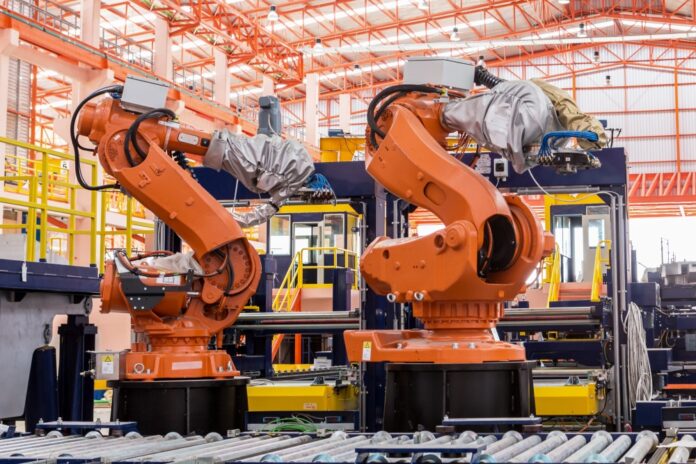Robots from Qatar to Cologne will need wi-fi for IIoT
The Wireless Broadband Alliance (WBA) has published new paper briefing businesses on how Wi-fi 6 will support the applications being created for the Industrial Internet of Things (IIoT).
The publication’s verbose title, Wi-Fi 6/6E for Industrial IoT: Enabling Wi-Fi Determinism in an IoT World, isn’t a great omen for readability and easy comprehension. Many curious eyeballs may slide off the page or the screen before they embark on the journey of exploration of Wi-Fi’s latest features. They may never discover how wi-fi 6/6E can cater for every demand made by IIoT applications used by manufacturers, logistics and Industry 4.0.
Robots
Any business using autonomous mobile robots, automated ground vehicles, predictive maintenance and augmented/virtual/mixed reality will want to read this paper to weigh up the pros and cons of Wi-Fi against a private network built on 5G. Manufacturers are increasingly using IIoT sensors for vibration, temperature and lubricant viscosity to catch emerging equipment problems before they result in extensive, expensive downtime. Other IIoT sensors provide real-time insights about production output, inventory levels and asset locations. Wireless has become the preferred way to network these sensors because it’s faster and cheaper to deploy than copper or fibre.
Oil and gas
“As more equipment is monitored, wiring becomes prohibitive,” the paper says. “Industry is moving towards the inclusion of wireless technologies to lessen the cost of obtaining more information about their processes. In one recent case in the oil and gas industry, moving to a wireless installation resulted in a 75% cost reduction in installation.” Produced by the WBA’s Wi-Fi 6/6E for IIOT work group, led by Cisco, Deutsche Telekom and Intel the manifesto explains why Wi-Fi 6 and 6E has technical options that are ideal for sensors and other IIoT applications. Such as scheduled access triggered by uplink orthogonal frequency domain multiple access (OFDMA).
Smörgåsbord
There is a smörgåsbord of deterministic quality of service options, like traffic prioritization feature that’s foremost in the minds of Industry 4.0 application builders who have Time-Sensitive Networking (TSN) demands. There is an explanation how Multi-link operation (MLO) can obviate packet loss. The Fine Timing Measurement (FTM) protocol specified in IEEE 802.11-2016 is another time synchroniser for precise indoor range and position/location determination. This can be used for Autonomous Mobile Robots (AMR) and Automatic Guided Vehicles (AGV) applications such as route planning, exception handling and safety-related aspects including collision avoidance based on proximity.
Timing money
The target-wake-time (TWT) feature added to Wi-Fi 6 is both an efficient save of both electrical power and our most precious resource of all, time, through its scheduling improvements. This may be ideal for battery-powered IIoT nodes that transmit infrequently, like those sensors that only tip you off about a problem when you’ve completely forgotten why the manual said they are important. Wi-Fi 6E supports up to 1.2 GHz of spectrum, making it ideal for use cases that require both multi-Gb/s throughput and determinism, such as industrial augmented. Virtual or machine reality and sensor fusion.
New industrial age
The 52-page report also includes RF/network deployment guidelines for factory, warehouse, logistics and other use cases. “Wi-Fi has been a key enabler of the global IIOT market, which is on track for a 23% expansion between 2017 and 2023, said Tiago Rodrigues, CEO of the Wireless Broadband Alliance.” So the WBA’s collective creatives are giving Wi-Fi 6 and 6E new powers to provide multi-Gb/s data rates, additional spectrum, deterministic performance and every other power needed to support the demanding applications of the next industrial age.



